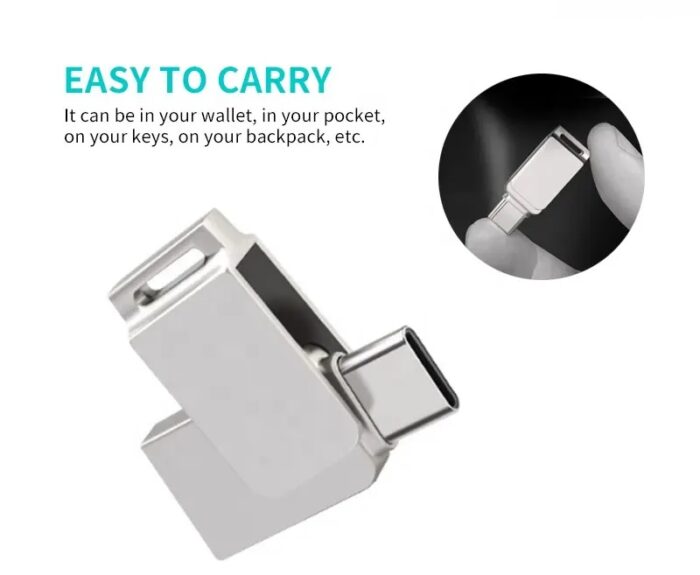The History of the Creation of USB Flash Drives
From floppy disks to external hard drives, the evolution has been constant. However, the creation of the USB drive marked a before and after in how we carry and share data. Over the years, USB drives have evolved not only in terms of capacity and speed but also in their design and customization, becoming essential tools for both individual users and businesses.
The First Steps: The Invention of the USB Drive
The birth of the USB drive, also known as a flash drive, has its roots in the 1990s. The idea of creating a small, portable device capable of storing large amounts of data emerged as a necessity in a world that was generating more and more information. In 1999, the Israeli company M-Systems, led by Dov Moran, developed what is considered the first USB drive. This small device used flash memory to store data, making it much faster and more reliable than floppy disks, which were the standard at the time.
The first USB drive, called “DiskOnKey,” was launched in 2000 with a capacity of 8 MB, a quantity that today would seem insignificant but was revolutionary at the time. The creation of the USB drive represented a significant improvement compared to floppy disks, not only because of its storage capacity but also because of its durability, as it had no moving parts that could wear out with use.
The Evolution of USB Drives: Capacity and Design
Over time, USB drive technology continued to evolve. Storage capacity grew exponentially, from the initial 8 MB to several terabytes in today’s most advanced models. Additionally, data transfer speeds improved drastically thanks to the evolution of USB interfaces, from USB 1.0 to the current USB 3.2 and USB-C.
Parallel to these technical advancements, USB drives began to diversify in terms of design. At first, the devices were fairly standard and uniform in appearance, but soon companies saw the opportunity to use USB drives as marketing tools. Thus, custom USB drives were born.
The Era of Custom USB Drives: Innovation and Marketing
Customization of USB drives began as a simple addition of company logos on the device casing, but it quickly became an industry in itself. USB drives started being manufactured in an almost infinite variety of shapes, colors, and materials. From character figures to product replicas, custom USB drives became a creative way to represent a brand or concept.
Companies discovered that custom USB drives were an excellent promotional tool. Unlike other marketing items like pens or mugs, USB drives offered real value to the user, as they could be used to store and transfer data. Moreover, their compact size and the ability to customize them creatively made them very attractive for advertising campaigns, corporate gifts, and promotional events.
Customization as a Reflection of Identity
Beyond corporate use, custom USB drives also found a market among individual users. The possibility of having a storage device that reflected the user’s personality, tastes, or interests became an additional attraction. Thus, themed USB drives emerged, ranging from popular movie and TV characters to designs alluding to specific hobbies like music, sports, or video games.
Custom USB drives also began to be used at special events like weddings, birthdays, and conferences. Instead of traditional keepsakes, event organizers opted to give custom USB drives containing photos, videos, or presentations related to the occasion. This trend has grown over the years, demonstrating that custom USB drives are not only useful but also a means of expression and commemoration.
The Future of Custom USB Drives
Despite the rise of cloud storage services, China USB flash drives factory remain popular due to their simplicity, portability, and the security they offer by not relying on an internet connection. Additionally, the trend toward customization shows no signs of slowing down.
In the future, we are likely to see USB drives with even more advanced technologies, such as the integration of biometric security features, larger storage capacities, and even faster data transfer speeds. Moreover, customization will continue to evolve, with the possibility of incorporating technologies like 3D printing to create even more unique and personalized designs.
Conclusion
The history of custom USB drives is a reflection of how technology can adapt and evolve to meet the changing needs of users. From their humble beginnings as simple storage devices, USB drives have become essential tools in daily life, while also offering a creative and personal way to express identity and brand. As technology advances, we can only imagine what new forms these small but powerful devices will take in the future.








